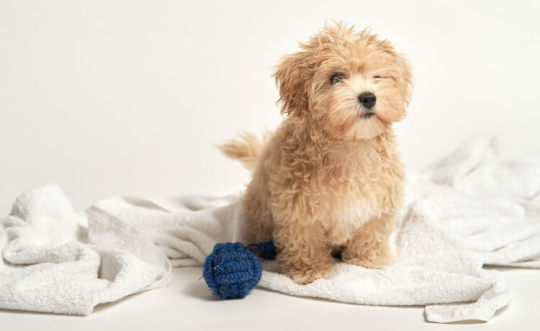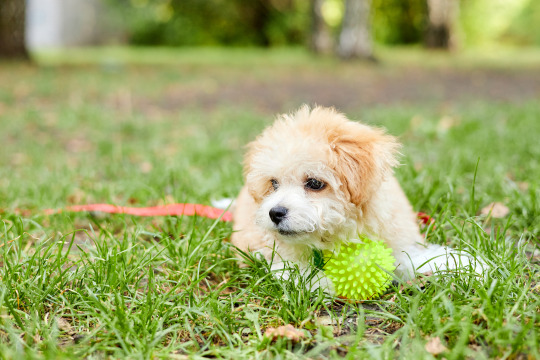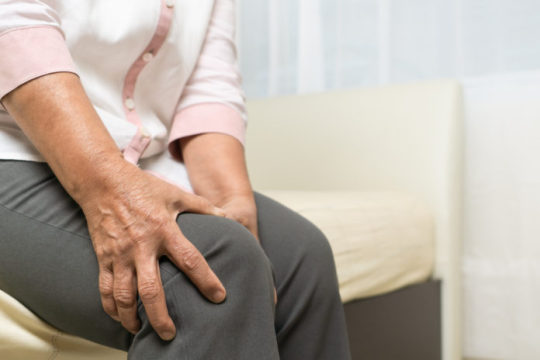#patellar syndrome
Text
Sometimes the thing that helps is actually physical exercise and that fucking sucks. How is my body able to make my lungs breath and my heart beats all right but I don't naturally have enough core strength to stay upright for ten minutes ?
#i do work sitting all day and spend a lot of time in. ed.#in bed*#but.#!!!#I walk a bit !#i have at least thirty minutes of fast walking to and from the train station everyday#+ the other walking I do in a day#anyway I'm mad#cause my legs don't hold me up and I need to exercise to build muscles around my knees and it'll help apparently#but I need an indoor bike etc#which is expensive and takes a lot of place !!#the problems are : i don't have enough patience or reasons to excersice everyday#the adhd can not#but how tf do I find a coach that can adapt to me#i went to zen gym class for some times and it helped but I can't hold up my arms for 15 seconds yall#bref.#just another disabled person renting#fibromyalgia#disability#patellar syndrome#chronic pain
7 notes
·
View notes
Text


PFPS flag
A flag for PFPS also known as Patellofemoral Pain Syndrome or, alternatively, Patellar Tracking Disorder. Colors were loosely chosen based on those that came up when I searched PFPS awareness.
Tagging for ID help: @accessmogai
#disorder flag#disability flag#chronic pain flag#my flags#liom#liom flags#pfps#patellofemoral pain syndrome#patellar tracking disorder
34 notes
·
View notes
Text
patellar instability is so fun until I can't get comfortable under my blankets because they keep pushing my kneecaps around
10 notes
·
View notes
Text
So I'm finally accepting the fact I need aids in my day to day life. I have never really given myself the kindness to take care of myself, as I grew up in a very "just push through it cry baby" family. But in just pushing through it, I've made my situation worse. So it's time to allow myself to lessen my pain.
Sunglasses
As I get pain in my eyes after sitting in artificial light for too long, and immediate pain in natural sunlight. This has always been an issue but is much worse now that I've doubled my dose of Prozac (causes light sensitivity)
Noise Cancelling Headphones/Regular Headphones
Due to my autism (and social anxiety) I get easily overstimulated in public places and this can help
Walking Stick
My patellofemoral pain syndrome (PFPS) is just getting worse and worse so I need a cane to help myself walk, as it'll take weight off of my bad knee, help when my knee gives out, and will be very very helpful when climbing my house's 62 stairs
Knee Brace
Same as above, I need it to keep my knee cap from sliding around
Sensory Toys
I need to carry my stress shark, tangle, and fidget spinner with me to help me cope in high stress environments (especially when I'm by myself)
Rats
This one is a bit impractical and strange but having one of my pet rats with me when in public spaces really helps me. I feel a lot calmer, safer and generally less freaked out. They're just silly little guys
#mobility aid#disability aid#disabled#autism#actually autistic#rat#pet rat#anxiety#patellofemoral pain syndrome#patellar tracking disorder#chronic pain#vent
12 notes
·
View notes
Text
Restless legs and overpronation and knee instability. Can i just get a new pair of legs im tired of The Problems
9 notes
·
View notes
Text
my knee just popped out of joint. from sitting down. I wasn’t even sitting on my leg. just. the action of sitting, and therefore of bending my knee, made it ricochet off into space. this happens at least once every couple of months, no matter how careful I am or what I’m doing. has since I was 12. but drink more water, amirite
#patellar subluxation syndrome#disabled#text#'I know what's wrong with it; it ain't got no cartilage'
4 notes
·
View notes
Text
the Knee Demons have been keeping me off my computer so I haven't gotten a lot done, except for today where I've forced myself to sit over here for the last several hours to be productive. surely there will be no negative repercussions from this course of action.
0 notes
Text
Confession: I still can't ride a bike because as a kid one time I fell and (patellar instability) my kneecap didn't dislocate, but it popped out of place long enough for me to very clearly notice, but went back once I moved. And then I decided I wouldn't do anything that could risk injury because I thought all my joints worked like my kneecaps and would just. Shove themselves out of place. And so I didn't learn to ride a bike.
Anyway it's been like 8 years and I found out that fear wasn't irrational and I do in fact have Joints Shove Out Of Place Syndrome and I was right and everyone was wrong and I'm better than you
3 notes
·
View notes
Text
Happy Disability Pride Month!
In honor of the shift from LGBTQ Pride Month to Disability Pride Month, I’m going to bring awareness to some underrepresented and underinformed disabilities as a queer and disabled artist/writer. These are all disorders that I have come across among friends and acquaintances. Every disorder I discuss must have a clinical diagnosis in order to be treated. You should only be self-diagnosing if you plan on going to a doctor to confirm your speculations. Do not self-diagnose if you are not willing to confirm with a medical professional. This post is not to diagnose you.
Big Trigger Warning: Discussions of psychological disorders like E/Ds, depression, and personality disorders.
Dysautonomia
Any disorder relating to the autonomic (involuntary) nervous system
POTS
I have this! It is a nervous system disorder that affects heart rate and blood pressure because your nervous system does not allow your muscles to properly circulate blood, especially through the legs. Some symptoms include elevated heart rate, chest pain, low or high blood pressure, fatigue, changes in body temperature, and dizziness or fainting. POTS is more common in AFAB people than AMAB.
Amyloidosis
Amyloidosis is a disorder that occurs when a protein known as amyloid builds up in the organs. Amyloidosis is closely related to dysautonomia and chronic pain syndromes such as Ehlers-Danlos Syndrome because of the comorbid symptoms. These symptoms include edema, purpura around the eyes, skin that bruises easily, and fatigue.
Frey’s Syndrome
A neurological disorder closely related to dysautonomia that causes excessive sweating while eating. There are very few solutions to this disorder and even fewer of them are known to work.
Mitochondrial Syndrome
Mitochondrial diseases occur when there are genetic mutations and deformations to the mitochondria in cells that directly influence how the organelle produces energy. People with mitochondrial diseases can have poor growth, muscle weakness, seizures, visual and / or hearing problems, learning disabilities, and may develop kidney, liver, or heart disease.
Autonomic Dysreflexia
Autonomic dysreflexia is a disorder that causes abnormal overreactions of the autonomic nervous system. Symptoms include elevated heart rate, excessive sweating, and high blood pressure.
Chronic Pain
Any disorder relating to long-lasting pain surrounding any part of the body.
Patellofemoral Pain Syndrome
I have this one too! Patellofemoral pain syndrome is a chronic pain syndrome in which muscles in the lower extremities are too weak to support patellar (kneecap) movement. Thus, the patella (kneecap) will not track right. this causes lots of issues with walking.
Scoliosis
I also have this one! Scoliosis is defined as a physical disorder in which the spine is not a straight vertical line. There is either an “S” or “J” curve in the spine, compressing it and causing sharp or aching back pain.
Temporomandibular Joint Dysfunction
TMJ causes pain and tenderness in jaw joints and surrounding muscles and ligaments. Symptoms of TMJ include jaw stiffness, limited movement and locking of the jaw, ringing in ears, and dizziness.
Myofascial Pain Syndrome
This is a chronic muscular pain disorder. Typically, this pain is confined to one specific area, such as the neck or shoulders.
Fibromyalgia
A chronic disorder that causes pain and tenderness throughout the body, as well as fatigue. People with fibromyalgia can also have depression, anxiety, and trouble with memory and concentration.
Ehlers-Danlos Syndrome
EDS is a group of disorders that affect connective tissues that support the skin, bones, blood vessels, organs, and other tissues. Symptoms of EDS include stretchy, translucent skin, loose joints, and chronic pain.
Arthritis
Arthritis is defined as inflammation in one or more joints causing stiffness and pain. There are many different kinds of arthritis, each with different causes. These causes can include wear over time, infections, and underlying diseases.
Neurological Disorders
Any disorder relating to the brain and how it functions.
Seizure Disorders
Epilepsy
Epilepsy is a disorder of the brain characterized by repeated seizures. People with epilepsy can experience multiple kinds of seizures and can experience symptoms such as confusion, staring spells, stiff muscles, and loss of consciousness.
Cerebrovascular Diseases
Functional Neurological Disorder
Functional Neurological Disorder is essentially a stroke mimic. It can replicate the symptoms of a stroke, such as limb weakness, numbness, and speech disturbance.
Migraines
Lots of people have migraines and I am no exception. Migraines are caused by excessive blood flow to the brain. Migraines affect more than 10% of people worldwide and are 3 times more likely to affect AFAB people than AMAB people.
Psychological Disorders
Any disorders affecting mood, thinking, and behavior. I will not be discussing my mental disorders on the internet. Most people are familiar with what these are and what they look like, so I will instead be providing statistics for each one.
Anxiety Disorders
Generalized Anxiety Disorder (GAD) affects 6.8 million adults. Only 43.2% of those adults are receiving treatment. AFAB are twice as likely to be affected (Anxiety Disorders Association of America).
Panic disorder (PD) affects 6 million adults. AFAB are twice as likely to be affected (Anxiety Disorders Association of America) .
Obsessive-Compulsive Disorder (OCD) affects 2.5 million adults. AFAB are 3x more likely to be affected (Anxiety Disorders Association of America) .
Post-Traumatic Stress Disorder (PTSD) affects 7.7 million adults. AFAB are 5x more likely to be affected (Anxiety Disorders Association of America) .
Depression
Approximately 280 million people in the world have depression. AFAB are twice as likely to develop depression (World Health Organization).
Bipolar Disorder
4.4% of US adults experience bipolar disorder in their lives (National Institute of Health).
Personality Disorders
It is estimated that 9% of US adults have at least one personality disorder (American Psychiatric Association).
Eating Disorders (TW)
Eating Disorders affect 9% of the population worldwide (National Association of Anorexia Nervosa and Associated Disorders).
BIPOC are significantly less likely than white people to be asked by a doctor about eating disorder symptoms (National Association of Anorexia Nervosa and Associated Disorders).
Black teenagers are 50% more likely than white teenagers to exhibit bulimic behaviors (National Association of Anorexia Nervosa and Associated Disorders).
Rates of body dissatisfaction were higher among transgender and nonbinary youth (90%) compared to cisgender youth (80%) (National Association of Anorexia Nervosa and Associated Disorders).
#disability pride month#disability awareness#disability#dysautonomia#pots#chronic pain#neurological disorder#psychological disorders
15 notes
·
View notes
Text
Is A Maltipoo Dog Breed for You?

50% Maltese, 50% poodle, and 100% adorable cuddle buddy, the maltese poodle, or Maltipoo, is a tiny toy dog for the masses. As playfully active as they are petite, these hybrid hounds will steal your heart and your last chicken nugget if you’re not paying attention.

Bred as the perfect house pet, Maltipoos combine the sweet and sensitive nature of the Maltese with the shed-free coat of the poodle. If you need a lap-warmer, a nap partner, or a cutie-patootie to strut around the neighborhood with, you’ve found your match in this hybrid breed.

How Big Do Maltipoos Get?
There are several sizes available: teacup, toy, standard
Height: 8–14 inches
Weight: 5–19 pounds
Since there can be a slight variance between the size of the Poodle parent, Maltipoos will, therefore, also vary in size.

Common Colors
Cream, White, Fawn, (occasionally Black or gray)
Dog Breed Group
Hybrid Designer Breed
Coat Type
Scruffy to Curly

Suitable for Apartments
Yes
How Long Do Maltipoos (Generally) Live?
Small dogs usually take the crown for the longest lifespan, and this pint-sized dog breed lives among royalty in this regard. Take care of your maltipoo, and you’ll usually see them thrive for 12–15 years.

What Is A Maltipoo’s Temperament & Personality Like?
Maltipoos are loving and fun-loving dogs that will quickly grow attached to you and your family. They are even one of the most popular poodle mixes. In some cases, they can wind up a little too attached. The maltipoo is known as a sensitive snuggle bug and may develop mild separation anxiety if you can’t devote enough of your time. Give them plenty of affection and attention, though, and they’ll return it in spades.

Do Maltipoos Need A Lot Of Exercise?
Despite this companion dog breed’s diminutive size, these furry little balls of energy need a fair bit of exercise to keep from going stir-crazy. If you can slot two 15- or 20-minute walks into your daily schedule, you’ll be able to give your pup the physical activity they need.

Good With Kids? Cats? Dogs?
The average Maltipoo is kind-hearted by nature, so you can count on this: if a kid, cat, or dog is friendly to your Maltipoo, they’ll be affable right back. However, larger dogs may scare the collar off a toy Maltipoo at first, so it’s best to supervise initial meetings and puppy playdates.

Training
Perhaps due to their poodle parentage, Maltipoos are usually trainable little tykes. These are fairly intelligent furballs, so any misunderstanding is probably intentional.
As with all dogs, the recipe for training success involves a pinch of patience, a pitcher of praise, and several heaping handfuls of treats. And remember, the sooner you start with obedience training, the better.
These dogs are always eager to play, so incorporate fun into the training. Unfortunately, the Maltipoo requires plenty of time to grasp potty training fully (whether inside on pads or outdoors.)
Barking
A Maltipoo is likely to be a bit of a barker, making him a good watchdog. Most dogs are alert and often bark at anything suspicious but seldom show aggression

Health Issues
Because Maltipoos are selectively bred from two distinct breeds, there’s a larger gene pool available. A bigger pool often means fewer hereditary health issues.
With that said, Maltipoos are still susceptible to certain conditions, including:4
Epilepsy
Collapsing trachea (a weak or pinched windpipe)
Patellar luxation (kneecap issues that can cause arthritis)
Retinal atrophy (which can lead to blindness)
Colitis (inflamed colon)
White shaker syndrome (tremors associated with their coat color)

Food
A tiny mouth means a tiny belly—and that means a tiny appetite. Maltipoos only need about a cup of food each day, so a monthly supply of high-quality dog food should run you $25.

The Basics of Grooming
The Maltipoo’s grooming needs will vary depending on his coat, but all Maltipoos need regular brushing. Those with the curlier Poodle coat require professional grooming every 4 to 6 weeks. Some owners learn to use the clippers and do the job themselves, but most rely on the pros. Either way, it’s essential to take proper care of the coat, because without regular grooming it will quickly become a matted mess that can cause painful skin infections at the roots of the hair.
Your Maltipoo’s ears need to be kept clean and dry, so clean them regularly with an ear cleaning solution recommended by your veterinarian. The rest is basic care. Trim your Maltipoo’s nails as needed, usually every week or two. Small dogs are prone to periodontal disease, so brush his teeth frequently with a vet-approved pet toothpaste for good overall health and fresh breath.

Do Maltipoos shed?
This curly-hair dog sheds very little to none at all. Much of Maltipoos’ shedding potential is a result of whether or not their coat resembles their Poodle parent, who does not shed at all, or their Maltese parent, who sheds only slightly.

Are Maltipoos hypoallergenic?
Maltipoos are one of the most hypoallergenic dogs you can own, making them great companions for people with allergies. While no dog is 100% hypoallergenic, Maltipoos’ lack of shedding and minimal dander put them close to the top of the list of allergy-friendly pooches.

Toys, Treats, Beds, & Accessories
Treats and toys keep your Maltipoo happy and high-spirited. Here’s a sample budget to give you an idea of what you might spend on extras and essentials for this small dog breed:
Plush toys ($45)
Tasty treats ($40/year)
A small dog bed ($30–50)
A leash and collar ($30)
Basic grooming supplies ($80)


14 notes
·
View notes
Text
Understanding Knee Pain and it’s relation with age
By Dr. Suhit Shah
Best Orthopaedic and joint replacement surgeon in Ahmedabad
Nowadays as medical field is improving in all aspects; may it be diagnosis or treatment. So with development of knowledge the need for treating routine problems have risen enormously. The problems which were previously neglected are being considered seriously by people and many new techniques are being evolved for overcoming those problems. One of the similar problem once neglected for decades is now being seen as a major problem leading to disability world wide; that is KNEE PAIN. Once considered to be a benign ailment is now one of the most commonly treated disability. By this article we are going to discuss the various causes of Knee pain and it’s relationship with age. We will also ponder about various modalities of treatment according to various age groups. Knee pain is Second most common problem faced in OPD secondarily to Back pain involving patients of all age groups.

• What is Knee Pain? What are its presentations?
Knee Pain as many of us know refers to discomfort around the joint between thigh and leg. It can be felt on all sides of the knee. May it be Anterior aspect being most common associated with osteoarthritis, tendinitis, bursitis, jumpers knee etc; or Posterior aspect pain commonly due to Baker’s cyst, meniscal tear, foreign body etc.Many a times Knee pain may present as pain radiating to both calf and thigh as well which requires examination and investigation by a Best Orthopedic Surgeon in Ahmedabad with experience in such conditions.
• Problems causing Knee Pain with refrence to Age:
0-10 years: Congenital tibia vara, Tibia valga, recurvatum knee, Rickets, Scurvy, Osteogenesis imperfects 10-20 years: Patella Alta, Patellar dislocation (habitual), Jumper’s Knee,Chondromalacia Patellae, Iliotibial band Syndrome, Osgood Slatter disease, Runner’s Knee 20-50 years: Sports injuries(meniscal injuries, ACL tears, MCL tear, PCL tear), Bursitis, Secondary osteoarthritis (due to infection, post- traumatic, inflammatory), Rheumatoid arthritis, Gout, Pseudo-gout, Septic Knee. 50 years and above: Primary Osteoarthritis(most common), Rheumatoid arthritis, Traumatic.
• Various Modalities of Treatment:
1. Conservative Management: Various methods are used for conservative management of Knee pain starting with Analgesics( PCM, NSAIDS, Opiods etc), Orthotics ( knee cap, knee brace), Physiotherapy modalities (ultrasound, IFT, ESWD, TENS), Quadriceps strengthening exercises, intraarticular steroid injections, intraarticular PRP injections, intraarticular stem cell therapy, rehabilitation training (hydrotherapy).
2. Operative treatment: Management depends on the cause of pain; ranging from arthroscopy debridement, autologous osteochondral grafting, Mosaicplasty, High Tibial Osteotomy (HTO), Unicondylar Knee Replacement(UKR), High Fibular Osteotomy(HFO), Total Knee Replacement (TKR).
• RELEVANCE OF AGE WITH TREATMENT MODALITIES:
There has been a very wrong misconception that Operative treatment cannot be done at young age for Knee pain. Operative treatment especially TKR, UKR, HTO has to be done at any age in a patient who is suffering from excruciating joint pain hindering the routine activities of life. Joint replacement can be done at even at 40 years of age of certain conditions due to which patient is unable to do activities like walking or working at his job place; even can be done at 95 years of age if patient is fit enough to continue doing his routine.
• What is the recovery period Post Knee surgery with refrence to patient’s age?
There is a misconception that recovery period post knee replacement is more with age above 60 years; only a part of which is true. Patients above the age of 60 having severe arthritis and disability recover pretty fast even with their age; this is all due to correction of biomechanics of knee and it has nothing to do much with age. Age does play a role in strength of muscle which needs to be gained with proper physiotherapy. So, may it be replacement at 40 years or at 90 years, if done well recovery can be gained within a short period of about 4-6 weeks.
• Ways of preventing Knee Pain
1. Avoid sitting on floor, cross legged sitting.
2. Reduce climbing up and down stairs as much as possible
3. Start performing aerobic exercises like walking, cycling.
4. Perform exercises which strengthen your quadriceps and hamstring muscles.
5. Yoga training can be pretty helpful.
6. Try loosing weight if you are overweight.
7. Proper dietary planning can be very helpful.
8. Use knee caps or other orthosis if instability felt.
9. Posture improvement is a must.
10. Warmups and cool down exercises are must if participating in any sport activities.
With this above article; we would like to create awareness regarding one of the common problem faced on daily basis.Hopefully this article would help solve many misconceptions and myths related to Knee problems and its treatment modalities.
If you face any of the above problems related to Knee, Sports Medicine etc. you can always reach Dr. Suhit Shah, Best Orthopaedic and Joint Replacement surgeon in Ahmedabad at Shayona superspeciality hospital, Ghatlodia, Ahmedabad or WhatsApp me at 9824133737 or [email protected]
2 notes
·
View notes
Text
If I focus on my pain or the way my legs aren't holding me up properly it makes it worst, but not focusing on it is hard af
#fibro fella#adhd#to make it worst !!#patellar syndrome#fibromyalgia#chronic pain#disabled#disability
1 note
·
View note
Text
Miserable Malalignment Syndrome
---- the disease with objectively the coolest name
I wanted to share some awareness about my limb difference, miserable malalignment syndrome (MMS) so I decided to create a post talking about it!
MMS is a rare rotational deformity affecting the legs. rotational deformities are a category of deformity in which a bone, or multiple bones, are inappropriately rotated. MMS is a condition where both the femur and tibia are rotated in opposite directions, and more specifically, where the femur rotates inwards (femoral anteversion) and the tibia rotates outwards (external tibial torsion) MMS most frequently affects a single leg but can be bilateral.
people with MMS typically appear knock kneed, bow legged, and duck footed with a squinting patella.
MMS typically causes severe pain in the hips, knees, lower back, and in the ankles. MMS is also associated with patellar instability, scoliosis, and early onset osteoarthritis. pain from miserable malalignment is often described as being similar to having knives in your knees.
MMS is most common in children as this condition sometimes naturally corrects itself. other times, MMS can be changed with a surgery called a derotational osteotomy. while many people with MMS choose to undergo this surgery many people also opt out of it.
#cripple punk#cripplepunk#physical disability#physically disabled#miserable malalignment syndrome#femoral anteversion#external tibial torsion
232 notes
·
View notes
Text
I'm going to let myself be positive for a second
I'm going through the shitter right now, my endometriosis is flaring up again which makes my scoliosis pain worse, which is also worsened by the fact I'm putting all my weight on one leg because my knee is unstable and in a lot of pain right now. And once I get my walking stick, the weight of my pressure on that is going to fuck my bad wrist up. It's either, my leg gets worse and it keeps giving out in tremendous pain or my wrist becomes weak, useless, and aches.
However, despite all this, I know I'm going to be okay. This is a massive privilege and one I'm very thankful for. I lost my job months ago (this is before my knee got worse but it was stressing me out to the point of s*lf h*rm and contemplating s*icide), but I'm still okay, I thought I was going to end up on the streets because I couldn't pay rent, and I cannot go back to my parents house for my own sake. I'm so so thankful for my wonderful, amazing, loving boyfriend. He's taken up the financial responsibilities, he pays my rent, pays for food, and makes sure the pets are fed. He makes sure I take care of myself, insists I sit down and he'll do whatever it is. He spends 8hrs on average at a stressful fast food job and then comes home, cooks, does the dishes, and takes care of me. I love him so much, and I was so scared he'd leave me because I feel so useless and demanding. But he assures me I'm not a burden to him, that he'll love me 'in sickness and in health', he tells me he loves me and if it comes down to it, he's fine with pushing me around in a wheelchair at 30.
And there's my wonderful cat, my cuddly little Jerma. She's so loving, she sleeps in bed under the covers with me, she is always at attention, ready to protect me whenever someone approaches my door, she makes my mostly bedridden time bearable.
I don't know I just am so grateful for the people and animals making this easier.
#autism#actually autistic#actuallybpd#bpd#endometriosis#chronic pain#vent#patellofemoral pain syndrome#patellar tracking disorder#knee pain
1 note
·
View note
Text
Understanding Knee Pain: Types, Causes, and Cures
Knee pain is a common issue that affects people of all ages. It can result from injuries, overuse, or underlying conditions. Let's explore the types of knee pain, their causes, and how to manage them.
Types of Knee Pain
Osteoarthritis:
A condition where the cartilage in the knee wears down over time.
Rheumatoid Arthritis:
An autoimmune disease causing inflammation in the knee joint.
Patellar Tendinitis:
Inflammation of the tendon connecting the kneecap to the shinbone.
Bursitis:
Swelling of the small sacs of fluid that cushion the knee.
Meniscus Tears:
Tears in the cartilage that acts as a cushion between your thigh bone and shinbone.
Ligament Injuries:
Tears or strains in the ligaments, such as the ACL (Anterior Cruciate Ligament).
Patellofemoral Pain Syndrome:
Pain around the front of the knee and the kneecap.
Causes of Knee Pain
Injuries:
Falls, sports injuries, or accidents can cause knee pain.
Overuse:
Repeated stress on the knee from activities like running or jumping.
Arthritis:
Conditions like osteoarthritis and rheumatoid arthritis cause knee pain.
Infections:
Infections in the knee joint can lead to severe pain and swelling.
Obesity:
Extra weight puts more pressure on the knee joints.
Age:
Wear and tear over the years can lead to knee problems.
Cures and Treatments for Knee Pain
Rest:
Give your knee a break from activities that cause pain.
Ice:
Apply ice packs to reduce swelling and numb the pain.
Compression:
Use a knee brace or wrap to support the knee.
Elevation:
Keep your knee raised to decrease swelling.
Medications:
Pain relievers like ibuprofen can help reduce pain and inflammation.
Physical Therapy:
Exercises to strengthen the muscles around the knee and improve flexibility.
Injections:
Corticosteroid injections can reduce inflammation.
Surgery:
In severe cases, procedures like arthroscopy or knee replacement might be needed.
Weight Management:
Maintaining a healthy weight reduces stress on the knees.
Proper Footwear:
Wearing supportive shoes can help prevent knee pain.
By understanding the types, causes, and treatments of knee pain, you can take steps to manage and alleviate it. Always consult with a healthcare provider for a diagnosis and treatment plan that's right for you.
1 note
·
View note
Text
4 Causes of Sports Injuries
Sports injuries may affect anybody, from highly trained players to weekend warriors.
Weakness in the muscles, ligaments, and tendons after intensive exercise is frequently caused by a lack of fitness, a failure to warm up adequately, and participating in an activity for which you are not yet fully prepared. This is frequently the source of harm.
When muscles are not exercised on a regular basis, muscle wasting occurs, which means that the muscle fibers have gotten weaker. As a result, if you attempt to participate in rigorous activity beyond your physical capabilities, you may become fatigued rapidly, which can lead to injury.

1.Overtraining
The good news is that continous exercise and training will help the muscles adapt and strengthen. Poor flexibility is another characteristic in unconditioned athletes that contributes to sports-related injuries.
Simply put, this is doing too much, too frequently, with insufficient rest in between. The most prevalent cause of overtraining is insufficient recovery time combined with increased intensity of training.
Symptoms include:
- Excessive tiredness.
- Restless sleep
- Inability to focus.
- Failure to do the workout or sport with proper technique.
An elevated resting heart rate is another physiological indicator of overtraining. The easiest method to avoid overtraining is to have enough rest in between sessions.
2.Improper warming up
Failure to do an appropriate warm-up puts you at risk of injury since your muscles and joints are not prepared for exercise. A warm-up is required to raise body temperature and circulate blood to the muscles.
A 15-20 minute warm-up should involve stretching and aerobic activities to prepare the body for activity, improve performance, and prevent injuries.
3.Poor technique
Any workout or sport that is done repeatedly with poor form is a reason for injury.
Over time, the symptoms of injuries produced by inappropriate technique can worsen, which can lead to a more serious condition or more severe injuries.
The greatest approach to prevent constantly practicing an exercise/sport with wrong technique is to hire a professional coach or trainer to show you how to do things correctly from the start, as well as to ensure you're using the proper gear, shoes, and equipment.
4.Overuse
Repetitive strain injuries are produced by repeatedly applying pressure to a certain muscle group, joint, or soft tissue region.
Tennis elbow, golfer's knee, thrower's shoulder (impingement syndrome), plantar fasciitis, and jumper's knee (patellar tendonitis) are examples of ailments that often deteriorate with time.
0 notes